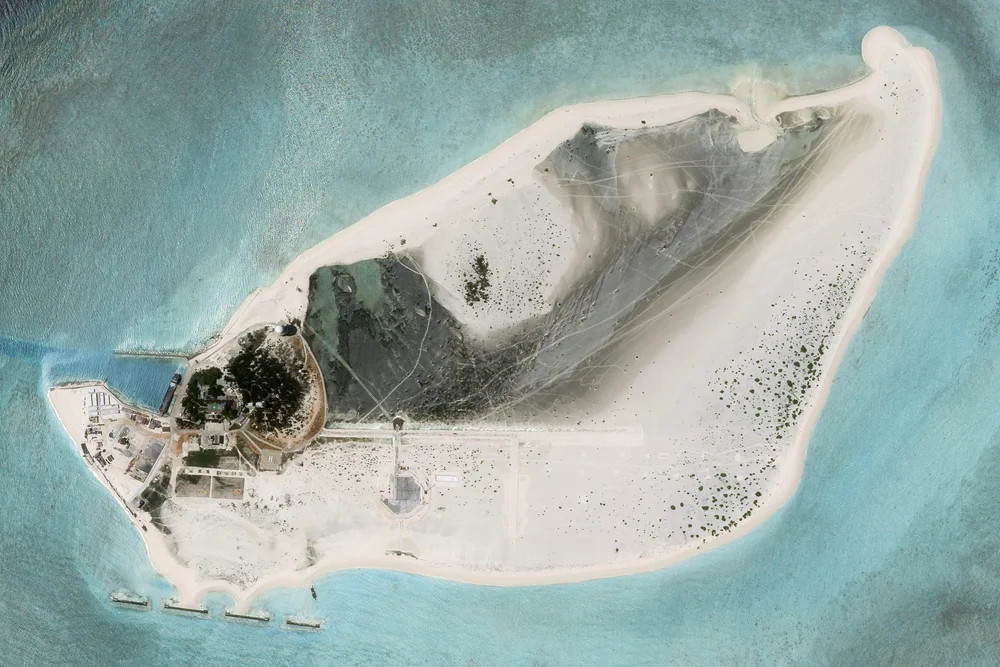Introduction
China’s growing assertiveness in Southeast Asia, particularly in the South China Sea, has intensified regional tensions and drawn global scrutiny. This comprehensive analysis explores China’s disruptive role, the responses from Southeast Asian nations, and the international community’s reactions.

China’s Assertive Actions in Southeast Asia
China’s strategic interests in the South China Sea are rooted in its desire to control a vital maritime route, rich in natural resources, and to reinforce its territorial claims based on historical maps. The construction of artificial islands and military installations has escalated tensions with neighboring countries and has sparked concerns about regional stability.
Philippines Diplomatic and Military Response
President Ferdinand Marcos Jr. has condemned China’s actions, highlighting them as a significant threat to peace in Southeast Asia. The Philippines has bolstered its defense capabilities through joint military exercises with the United States and Australia. Additionally, it has sought greater regional and international support to address the ongoing challenges posed by China’s assertiveness.
ASEAN’s Diplomatic Efforts and Challenges
ASEAN has attempted to mediate the dispute through negotiations for a Code of Conduct with China. However, achieving a consensus has proven difficult due to varying national interests and external pressures. The organization’s efforts to unify its stance have been hampered by delays and disagreements among member states.
Global Reactions and Their Implications
The United States has taken a proactive role in challenging China’s claims by conducting freedom of navigation operations in the South China Sea. This stance reflects broader international concerns about the impact of China’s policies on global trade and maritime security. European nations and other global stakeholders have expressed support for maintaining regional stability.
Economic and Environmental Impact of China’s Actions
China’s activities have led to significant environmental degradation in the South China Sea, including the destruction of coral reefs and disruption of marine life. The economic implications are also profound, affecting global trade routes and regional economies. Sustainable practices and international cooperation are essential to address these challenges.
Timeline of Key Events
- August 2024: Philippine President Ferdinand Marcos Jr. denounces China as a major disruptor of peace in Southeast Asia.
- July 2024: Continued construction by China in the South China Sea escalates tensions with the Philippines and other ASEAN countries.
- June 2024: ASEAN’s negotiations for a Code of Conduct face delays due to disagreements among member states and external pressures.
- May 2024: The U.S. conducts freedom of navigation operations in the South China Sea to challenge China’s territorial claims.
- April 2024: Environmental groups and Southeast Asian countries raise concerns about the environmental impact of China’s activities.
Expert Opinions
Dr. Maria Santos, geopolitical analyst at the University of the Philippines, states, “China’s aggressive policies have significantly altered the regional balance. There is an urgent need for increased international engagement to mitigate these tensions.”
Prof. James Liu, international relations expert at the National University of Singapore, comments, “ASEAN’s inability to present a united front coupled with China’s ongoing assertiveness creates a complex situation that requires more robust diplomatic and military responses.”
Conclusion
China’s assertive actions in Southeast Asia continue to challenge regional stability and international norms. The responses from affected nations and the international community reflect the complexity of managing these tensions. As geopolitical dynamics evolve, ongoing diplomatic efforts and international cooperation will be crucial in addressing the disputes and ensuring long-term peace in the region.
For Regular News and Updates Follow – Sentinel eGazette
External Sources
FAQs
- What are the key reasons behind China’s actions in the South China Sea?
- China’s actions in the South China Sea are driven by its strategic interest in controlling a major maritime route, securing natural resources, and asserting territorial claims based on historical maps and military interests.
- How has the Philippines responded to China’s activities in the South China Sea?
- The Philippines has taken a multi-faceted approach, including diplomatic protests, strengthening military alliances with the U.S. and Australia, and advocating for a unified ASEAN response to counter China’s actions.
- What are the implications of China’s actions on international trade?
- China’s assertive actions in the South China Sea affect international trade by potentially disrupting one of the world’s busiest maritime routes, which could lead to increased shipping costs and risks to global supply chains.
- How effective has ASEAN been in addressing the South China Sea dispute?
- ASEAN has faced challenges in reaching a unified stance due to differing national interests and external pressures. Efforts to negotiate a Code of Conduct with China have seen delays, highlighting the difficulties in achieving consensus.
- What role does the U.S. play in the South China Sea dispute?
- The U.S. conducts freedom of navigation operations to challenge China’s expansive territorial claims and supports its regional allies through military cooperation and diplomatic pressure to ensure the stability of international maritime laws.